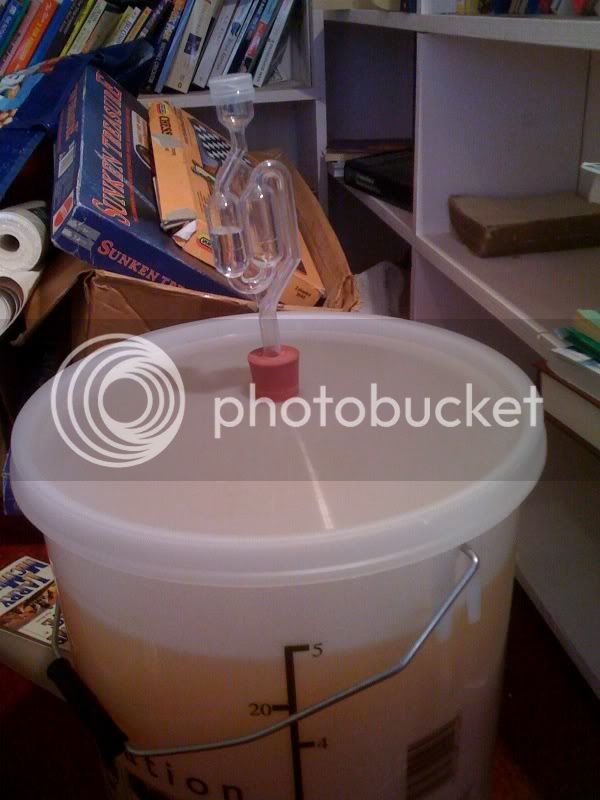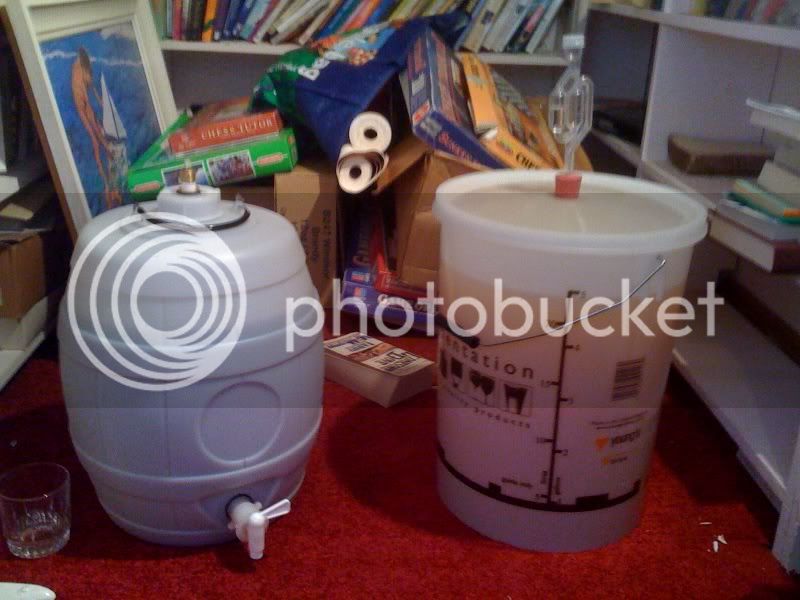percival
Regular.
- Joined
- Nov 1, 2008
- Messages
- 483
- Reaction score
- 0
ta for the thoughts BS, i'm not too keen on scrumpy, prefer my cider sparkling.
tannin, something fruity i read a recipe for had tannin in the ingredients, can't remember what it was so got some anyway just in case.
bottle conditioning ... i'm not looking to condition it really, its just a suitable bottle for a sparkling bevvy and a bottle i'll be sure to use plenty
rocket fuel .... if i don't overdo the sugar then it can't get too strong cos there won't be enough sugar to make 'too much' alcohol, so a lowish OG and ferment all the way then prime bottles for the sparkle. Having said that i am aiming for something strongish, maybe 8-10%. Something like pomagne (who remembers that?)
Yeast ... you suggested champagne or wine yeast on the first page of this thread, hence i got champagne. but thanks for the revised opinion. i may have to delay the TC now while i do some head scratching to get the strength i want with another yeast, cider yeasts go to 8-10% ish???
Kicking up sediment, yep a big consideration. Somewhere on THBF was a thread where various methods were mentioned for dealing with this. The one i'm going for will be dramatic .... prime and cork the bottles, wire down the corks. Store bottles upside down til drinky time (first spring BBQ in the garden). Open bottle upside down to eject yeast with the cork and masterfully 'right' the bottle before it all fertilises the lawn :grin: another reason to use a big bottle!
So all in all this is quite a deviation from what most have done, which isn't too surprising as i'm into brewing wine rather than beer so i'll swing that way if you know what i mean.
But being the TC guru BS i'll take your tip regarding not using champagne yeast if i can get some cider yeast soonish. The other thing is how to avoid making this too thin. Do i need to ensure there is some residual sugar/sweetness (glycerol perhaps?), or add something for body (maybe some grape concentrate?). what do you think?
tannin, something fruity i read a recipe for had tannin in the ingredients, can't remember what it was so got some anyway just in case.
bottle conditioning ... i'm not looking to condition it really, its just a suitable bottle for a sparkling bevvy and a bottle i'll be sure to use plenty
rocket fuel .... if i don't overdo the sugar then it can't get too strong cos there won't be enough sugar to make 'too much' alcohol, so a lowish OG and ferment all the way then prime bottles for the sparkle. Having said that i am aiming for something strongish, maybe 8-10%. Something like pomagne (who remembers that?)
Yeast ... you suggested champagne or wine yeast on the first page of this thread, hence i got champagne. but thanks for the revised opinion. i may have to delay the TC now while i do some head scratching to get the strength i want with another yeast, cider yeasts go to 8-10% ish???
Kicking up sediment, yep a big consideration. Somewhere on THBF was a thread where various methods were mentioned for dealing with this. The one i'm going for will be dramatic .... prime and cork the bottles, wire down the corks. Store bottles upside down til drinky time (first spring BBQ in the garden). Open bottle upside down to eject yeast with the cork and masterfully 'right' the bottle before it all fertilises the lawn :grin: another reason to use a big bottle!
So all in all this is quite a deviation from what most have done, which isn't too surprising as i'm into brewing wine rather than beer so i'll swing that way if you know what i mean.
But being the TC guru BS i'll take your tip regarding not using champagne yeast if i can get some cider yeast soonish. The other thing is how to avoid making this too thin. Do i need to ensure there is some residual sugar/sweetness (glycerol perhaps?), or add something for body (maybe some grape concentrate?). what do you think?




















![BREWING THERMOMETER STICKERS ACCURATELY MONITOR FERMENTING BEER & WINE LIQUID TEMPERATURES 5PCS HOME BREW SPIRITS WINE LCD ADHESIVE [US]](https://m.media-amazon.com/images/I/311DDjo2X3L._SL500_.jpg)























